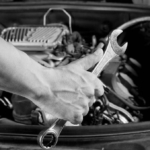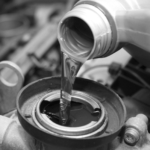The suspension is a vital car safety feature made up of different parts, such as struts, shock absorbers, bearings, and springs that promote smooth rides even on rough terrain. For this reason, it’s important to keep the suspension system in perfect condition because worn out shocks, for example, increase braking distance, according to a study report on Brakes & Front-end. Like any other car part, suspension components wear out overtime, making your rides rough.
And while regular maintenance keeps your vehicle running forever, spotting suspension problems can be tricky. Fortunately, there are some things you can check to determine the effectiveness of your car’s suspension system. Below are a few tips for diagnosing common car suspension problems.
Watch Out for Drifting
Drifting is a telltale sign your car has suspension problems. However, there may be other reasons why your car is drifting or pulling to one side. This includes improper wheel alignment, faulty brakes, inflated tyres, or steering issue. With this in mind, inspect your tyre pressure, brakes, and steering to identify where repairs are due.
Consider the Bounce Test
Conducting a bounce test is an excellent way to diagnose suspension problems. To do so, park your car on a level surface and apply all your weight on the front or rear of the car. Next, release the weight and observe how long the car bounces. If it bounces two to three times, it’s a sign the springs, struts, and shocks in the suspension are broken or sagging.
To improve your vehicle’s overall stability, consider replacing the coil springs or coilovers. If you’re a DIY enthusiast, you can replace these suspension parts yourself. All you need is high-quality equipment, such as a strut spring compressor. This tool helps you separate the damper and coil spring by compressing the spring to release pressure on the top hat so you can remove it. Depending on your needs and budget, you can buy a floor or wall mounted, clamshell, internal, or external spring compressor.
A Bumpy Ride Indicates Suspension Problems
If your ride feels bumpy or unstable, there’s a likelihood the car suspension is faulty. Typically, a functional suspension system absorbs shakes and bumps. However, the fluid in your car’s shock absorbers might leak, causing a suspension malfunction. When this happens, inspect the shocks underneath the vehicle, near the wheels. If the shocks are greasy, you need to fix the leak to enhance your vehicle’s stability on the road.
Your car’s suspension system is the reason you enjoy stable and comfortable rides, as it cushions bumps on the roads. It is, therefore, crucial to watch out for signs of suspension issues and fix them immediately. You can tell if the suspension is worn out if your car pulls to one side or drifts, bounces too long if you apply force on the front or back, and your ride feels bumpier than usual.





